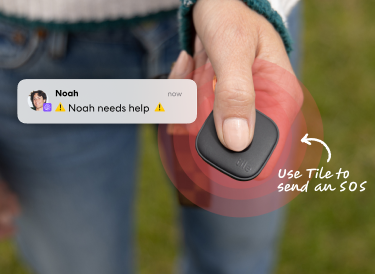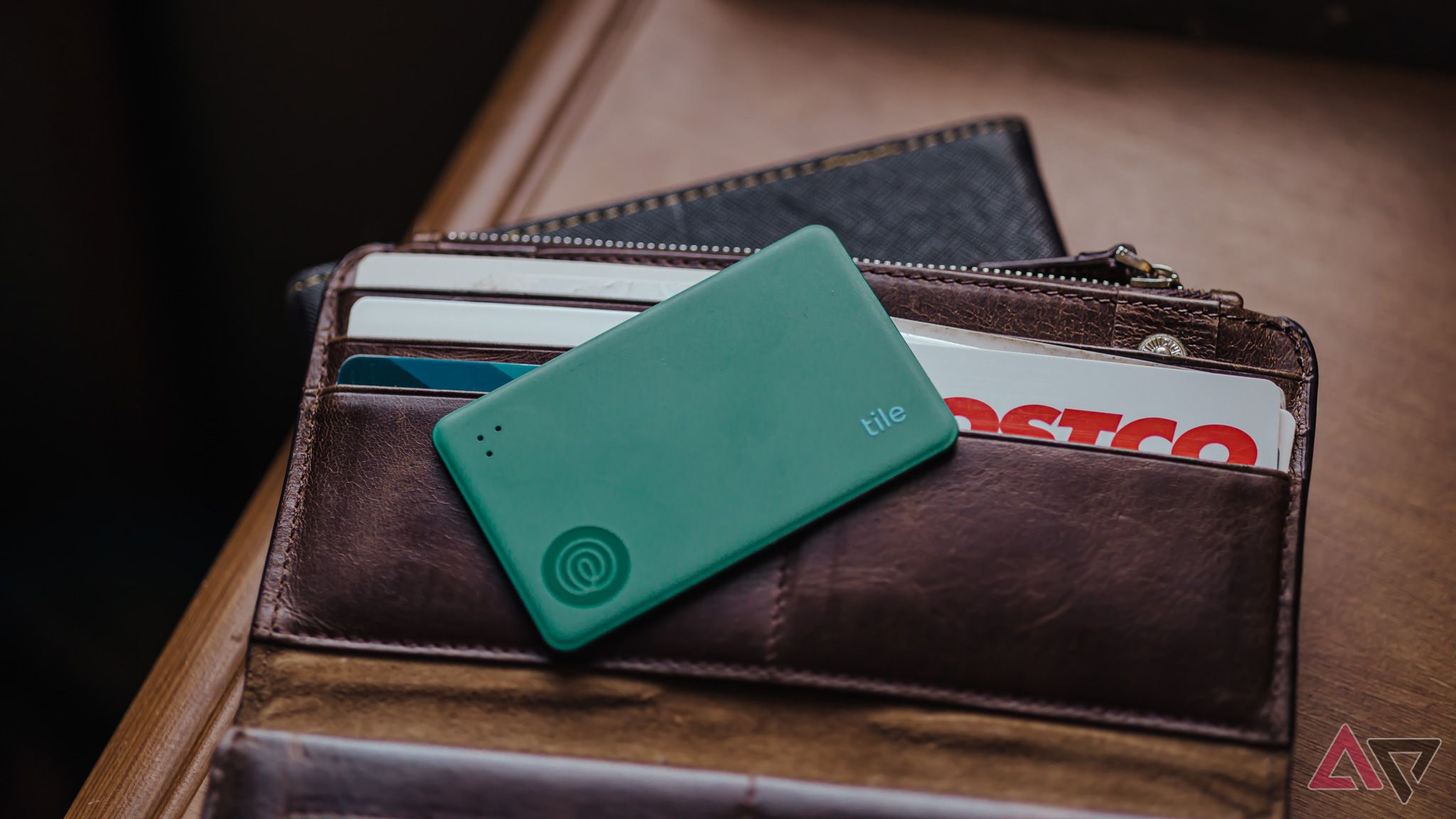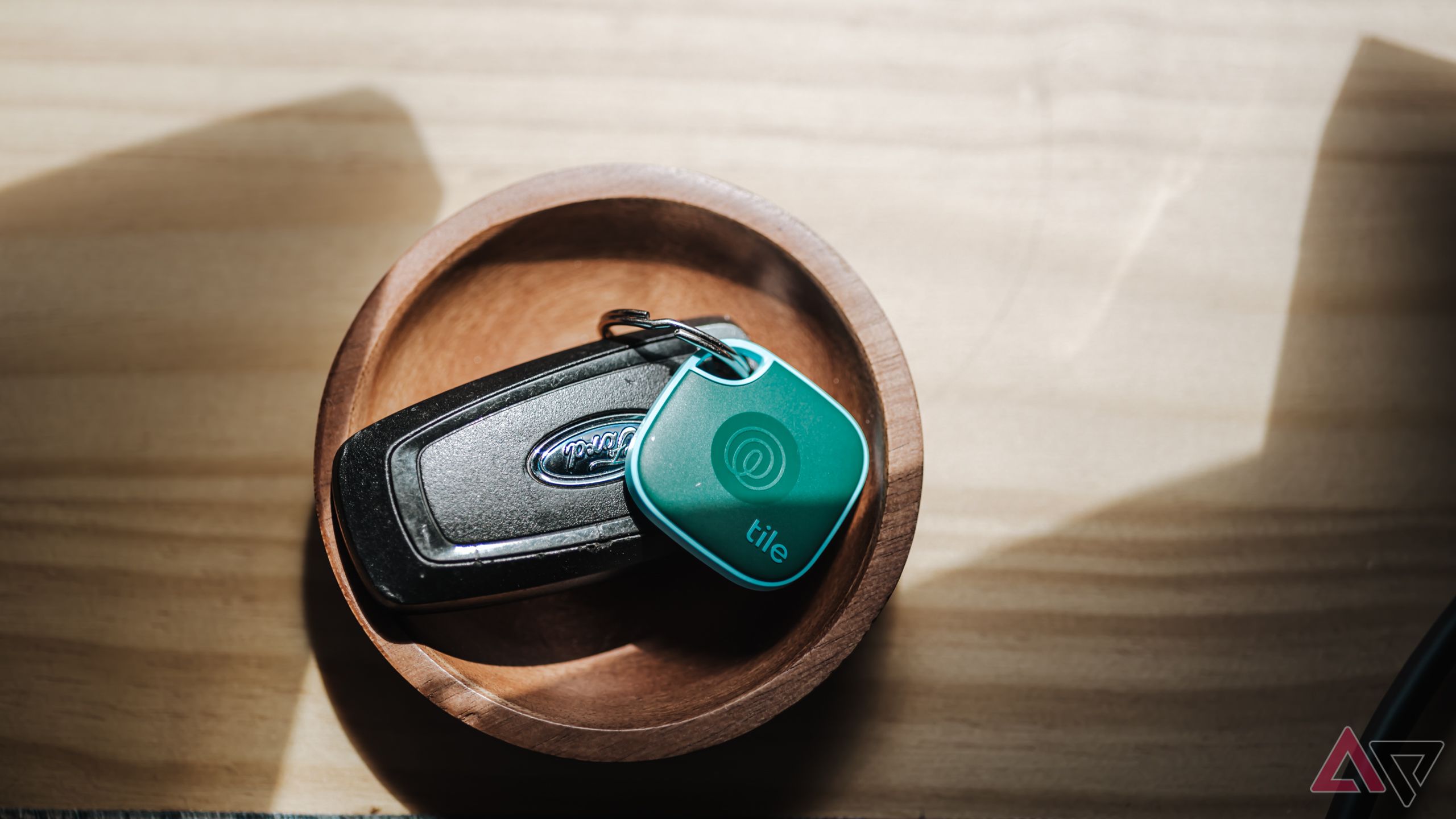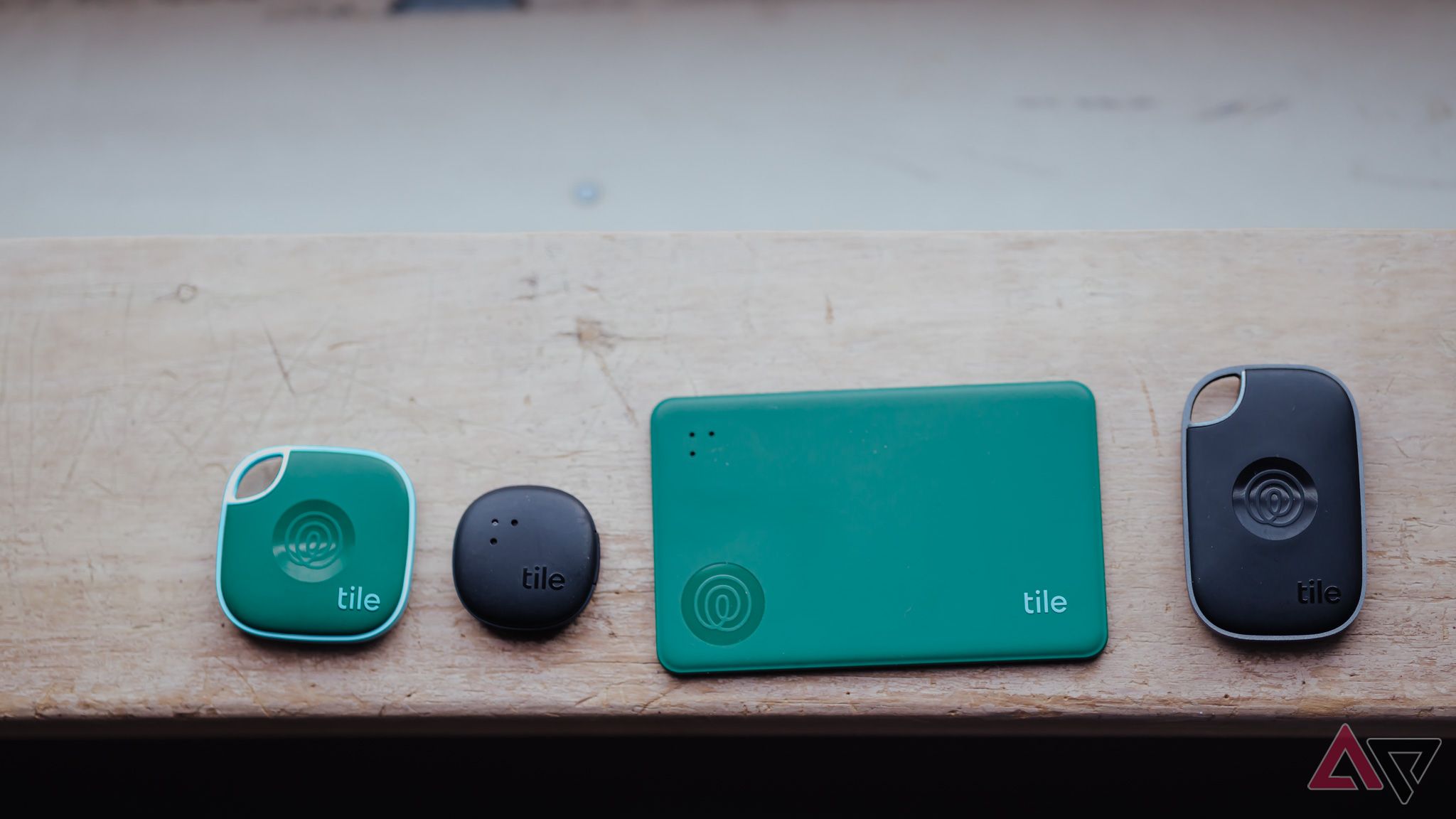What’s the best smart tag for Android users? Unlike with Apple, there isn’t one obvious answer. It varies based on the Android ecosystem — Samsung, for example, has its own native Bluetooth tags, while Google hasn’t offered a first-party smart tracker yet.
However, Tile’s one Android-compatible Bluetooth tracker has a longer history and larger network than any other. Tile hasn’t rolled out any new devices since 2022, but that just changed with a brand-new launch of redesigned, more powerful trackers. With some gains but significant absences, is the 2024 Tile Mate competitive enough to hold ground in an increasingly crowded market?

Tile Mate (2024)
While not as powerful of a tracker as its Pro sibling, the 2024 Tile Mate offers Android users a worthwhile smart tag outside the Google Find My ecosystem. The Bluetooth range reaches about 300 feet, which should work in most instances of finding your keys or bag around the house.
- Louder chime than 2022 Mate
- Works on Android and iOS devices
- Click-to-activate SOS via Life360
- Replaceable battery
- Can’t use with Google, Apple Find My Device
- Two subscriptions required to maximize use
- Bluetooth range is about half of Pro
Price, availability, and specs
The Tile Mate 2024 costs only $25, but there are some other considerations regarding its price. Firstly, its battery is not replaceable, so you’ll have to replace the device at the end of its battery life, which is roughly three years. The Pro is the only 2024 Tile tracker with a replaceable battery.
Now that Tile is part of Life360, two subscriptions expand a Tile tracker’s capabilities: Life360 and Tile. I’ll get more into what each tier of subscription offers later, but this is the pricing breakdown.
|
Subscription |
Price |
|---|---|
|
Tile Standard |
Free |
|
Tile Premium |
$3/month or $30/year |
|
Tile Premium Protect |
$100/year (no monthly option) |
|
Life360 Free |
Free |
|
Life360 Gold |
$15/month or $100/year |
|
Life360 Platinum |
$25/month or $200/year |
Like Tile’s older generations, the 2024 Mate can likely be found through your favorite large retailer. The brand is regularly offered through Target, Walmart, Best Buy, Amazon, and Home Depot, but when in doubt, the new devices will, of course, be available through Tile.
One new 2024 Tile Mate costs $25, the same MSRP as the 2022 Mate. You may be able to save a few dollars by buying the smart tag in two- or four-pack bundles, though. The 2024 Tile Slim, the credit-card-shaped Mate alternative, retails for $30, and the adhesive-backed 2024 Tile Sticker comes with a $25 price tag. Both of these trackers will be briefly mentioned in this review.
What’s good about the Tile 2024 Mate?
An expansive Android-friendly crowd-tracking network
The Tile Mate 2024’s hardware shows a sleeker, more compact design. In one of the above images, I show the 2024 Mate next to an earlier version. The redesigned 2024 is smaller and more rounded; this newest rendition also comes in four vibrant new colorways that Tile calls Navy Blaze, Green Surf, Pink Punch, and Aqua Lemon.
Tile says the 2024 Mate is louder than its predecessor, so I had to put that to the test. I dropped the tracker in a winter coat pocket and went three rooms away. I heard the tracker clearly when I pinged it. The device’s chime was much more muffled when I put it in a suitcase in a second-floor bedroom with the door open and rang it from the first floor, but I could still hear it faintly (in an otherwise silent house) when I rang from the first floor.
Here’s why Tile’s new devices are such a big deal. The brand was already a leading smart tag option for Android users, who in recent years have been forced to watch AirTag folks enjoy a far-reaching tracking system. In 2021, Tile reported over 40 million trackers had been sold. Even assuming that 10 million of those are no longer active and that another 10 million are doubled up to the same user, that’s 20 million people pinging Tile trackers.
Source: Tile
Tile told me that, now that the brand is paired with Life360, Bluetooth-enabled Life360 phones can contribute to Tile tracking, and can ping a smart tracker even if that phone doesn’t have the Tile app installed or isn’t connected to a Tile tracker in any way. Since there are over 70 million active Life360 users, the Tile smart tag network’s reach could explode by tens of millions. I’m not sure if existing Life360 users are automatically opted in, though, or if some permissions need to be manually changed — if I get clarification on this, I will update the review.
What are the real-time results? My partner spent the day out and about in Minneapolis with the Mate on his keyring, and the tracker pinged every five to 15 minutes. The frequency averaged about 10 minutes, with one instance of a 15-minute lapse between location pings. I used Tile several years ago, back when you could go hours in between a ping, so the improvement is impressive. Mileage will vary based on the density of Tile and Life360 users in your area.
Tile’s devices may not work on Google Find My, but they are still on the Works with Google Home roster, so I was able to add the 2024 Mate to my Google Home devices and ping the tracker via Assistant-enabled devices.
A nod to the Slim and Sticker
Unique and functional in their own rights, the new Tile Sticker and Slim are worthy of mention. The Slim’s shape makes it useful for wallets, passport holders, laptop or tablet cases, and luggage.
The 2024 Tile Sticker is largely unchanged from its 2022 predecessor, except for the added Life360 SOS functionality and a visual makeover. Like the two-year-old version, the 2024 Tile Sticker employs a three-year nonreplaceable battery and has a range of roughly 250 feet. Tile says the new Sticker’s ring volume has improved; in my testing, the Sticker’s volume was marginally quieter than the Mate’s.
It’s a bit smaller than the older Sticker and comes in a squircle shape, unlike the circular 2022 Sticker. Tile’s adhesive-backed tracker is true to its on-paper 250-foot Bluetooth range, and the sticky backing kept the tag firmly on my bicycle.
What’s bad about the Tile 2024 Mate?
Google will not Find My Device
The Mate performed very well in long-range tracking, but fell a bit short of its on-paper Bluetooth range, which is claimed to be 350 feet. I stood in my driveway to test the range while my partner walked down the sidewalk with the Mate. At 350 feet apart, the tracker couldn’t be located even with a straight, unobstructed path. After bringing the tag in by about 25 feet, the signal finally jumped up to moderate, and my phone could consistently ping the Mate (and vice versa) within three to five seconds when it was between 300 and 325 feet away.
I’m reiterating the obvious, but the 2024 Tile Mate is not compatible with Apple or Google Find My Device. If you want third-party Google Find My compatibility, look to competitors like the Chipolo One Point. Keep in mind that the Google Find My network, in its early stages, wasn’t in the best shape when Android Police tested it early this year. Things are likely to improve as the system matures, though.
Tile’s 2024 lineup doesn’t feature ultra-wideband (UWB) connectivity, an absence that gives the AirTag and the Samsung Galaxy SmartTag 2 an advantage. UWB makes finding tracked devices in close proximity easier, providing helpful augmented reality clues that prompt the user to look higher (like keys on top of a bookshelf), lower (like a remote lost under a couch), left, or right.
Trackers without UWB can’t guide you up or down the vertical plane to find an item. Tile announced a UWB-enabled tracker in 2021, the Ultra, but that never came to fruition. You do not need a Tile or Life360 subscription to use a Tile tracker. The 2024 Tile Mate can still be tracked via Bluetooth or the Tile/Life360 network, even without a subscription.
You can still send an SOS to loved ones without paying a monthly fee, too. (Sending SOS alerts to emergency services is commonly paywalled across any brand or product type, though.) I think most of today’s Tile users can get by on the mid-tier Tile subscription and probably don’t need a Life360 subscription. That said, the 2024 Mate’s most defining features are locked behind Tile’s monthly fee. This includes stolen item reimbursements up to $1,000, real-time alerts when a Tiled item is left behind, and a month of location history.
Should you buy it?
Get the Pro if you can spare $10
The Tile Mate 2024 is a good tracker. Even though I couldn’t quite reach the full 350 feet in my testing of the Bluetooth range, I have to give this smart tag props for its competitive battery life, loud siren, SOS feature, and strong iOS and Android-friendly network.
However, I can’t imagine a circumstance where the Mate makes more sense than the Pro. The Pro’s battery is replaceable, so you don’t end up with a dead weight tracker every three years. The Pro gives you an extra 175 to 200 feet of Bluetooth range. And the Pro’s siren is even louder than the Mate, too.
I can’t recommend the Tile Mate over the AirTag unless the SOS feature is particularly valuable — for instance, for a middle schooler walking home from school. The AirTag only comes in one design, which limits its functionality. Despite my repeated statements that AirTags are generally a better option for Apple users, Tile’s Sticker and Slim could be useful on iOS, depending on your usage needs. Apple does not seem interested in competing with those form factors for now.

Tile Mate (2024)
The Tile Mate 2024 is a good tracker, but the Tile Pro 2024 achieves greatness. If you’re buying smart tags in multiples, the $10 saved when picking the Mate over the Pro could be worthwhile. We can’t forget about the 2024 Sticker and Slim, either; with similar Bluetooth performance as the Mate, these are great smart tags to consider when a keychain-style tracker isn’t viable.
Source link





